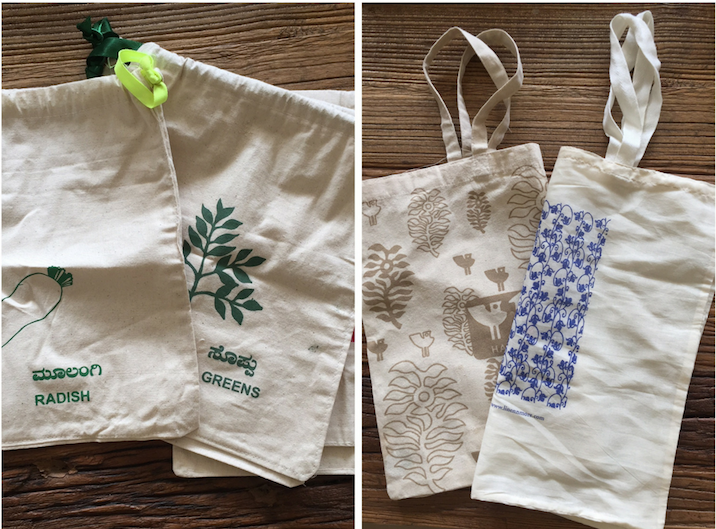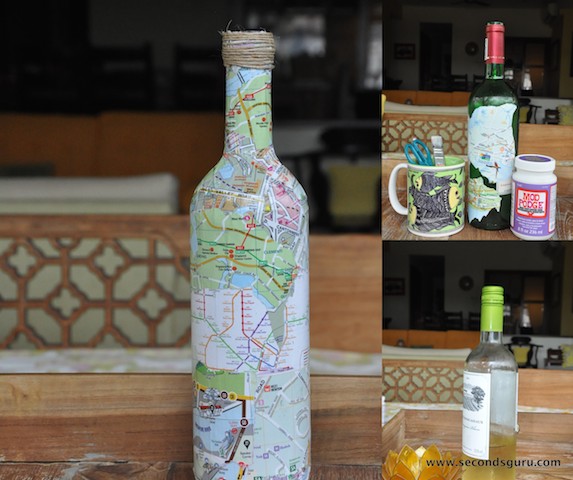Published 17 January 2022 ● Last Updated on 31 March 2022
Are upcycled and recycled products the same? What’s the difference between eco-friendly and sustainable?
With climate action and environmental sustainability becoming increasingly relevant concepts, there are a plethora of terms related to the environment in people’s lexicon these days – many are loosely used, some incorrectly too. Overall there seems to be a fair bit of ambiguity.
So we decided to take some key terms head on and explain what they stand for. The ones listed below are not legal or technical definitions, but more an attempt to break-down the most commonly used (and often confused) green terms. We must confess, some of them have befuddled us too!
1. Reusable versus disposable (multi-use vs single-use)
The debate over the relative merits of reusables and disposables is long-standing and relevant to many things we use in our daily lives – from plates and cutlery to water bottles. For instance – should you opt for reusable tote bags or disposable plastic? Let’s start by understanding the difference in terms.
Reusable products are those which can be used several times for the same purpose they were designed for, before being discarded. For instance, a cloth napkin or a washable food container. On the other hand, disposable or single-use products are designed for single use after which they are expected to be either recycled or discarded as solid waste. Good everyday examples would be tissue paper, disposable cameras and toilet paper.
But to assume that reusable products are always better than disposable or single-use products from an environmental standpoint is rather simplistic. Only a cradle-to-grave analysis – the input of energy and natural resources, impact of use of product on the environment and humans, and impact of disposal of the product on the environment – have to be considered for a fair assessment of any item’s carbon footprint.
This study published in the Science Direct on the “Environmental impacts of takeaway food containers”, set out to understand how many times one would have to reuse a container for it to be the more eco-friendly choice, in the context of the takeaway food industry. It points out that a reusable “Tupperware” polypropylene container would have to be reused between 16 and 208 times for its environmental impact to equal that of a single-use Styrofoam container.
No, we are not suggesting that you choose styrofoam over tupperware. We are asking you to use that tupperware in your cupboard repeatedly over a long time, because ultimately the reuse is what will make it sustainably superior. Similarly, instead of taking a new tote or paper bag when you go shopping next time, just take that neatly folded plastic or paper bag from home, and have an immediate impact in reducing your footprint!

2. Upcycle versus recycle (re-made vs reimagined)
What do I do with all the plastic bottles that I have collected over the years? Do I upcycle them or recycle them? To address that question, let’s first demystify the two terms with an example of a glass bottle. If a used glass bottle is melted and then reshaped into a lampshade, that’s recycling. However, if the same bottle is cleaned and directly used as a shade over a bulb, that’s upcycling. To cut a long story short, as per Environmental Protection Agency (EPA) “Recycling is the process of collecting and processing materials that would otherwise be thrown away as trash and turning them into new products.” It involves reclaiming of constituent materials, so they can be used as raw materials again. Upcycling, in contrast, is the creative reuse of existing materials, to create a product of higher value.
Both recycling and upcycling have environmental benefits: they fulfil a need without using virgin materials. Upcycling has added advantages: the resources saved in breaking down a product into raw material to make something new, and the creative satisfaction achieved from fashioning something new out of an old product. Case in point: use of old wooden pallets for the creation of new wooden products!

A good-to-know related term here is downcycling – the process of converting a material into something of lesser value than its original form. Cleaning rags made out of old t-shirts is a perfect example.
Now back to the question we began with – should you be sending the bottles for recycling or craft them out? If you can upcycle them to truly avoid fresh purchases – go ahead and enjoy! Else, rinse them and recycle.
3. Eco-friendly and sustainable (short vs long term)
Eco-friendly and sustainable are used interchangeably so frequently and carelessly that the difference between the two seems to have blurred over time for many. According to Merriam-Webster dictionary, the term eco-friendly simply means “not environmentally harmful.” The Federal Trade Commissions (FTC’s ) green-guide can help you verify the “eco-friendliness” of a product or a package.
Sustainability on the other hand, is a much broader term and sets different standards than eco-friendly; it focuses on the use of resources now while being conscious about future needs. The United Nations defines sustainability as “meeting the needs of the present without compromising the ability of future generations to meet their own needs.” To be sustainable, a product has to be mindful of three outcomes – environmental, social and economical benefits.
Still confused? A product made from renewable resources may be labeled eco-friendly, however if its life-cycle analysis reveals the use of a disproportionate amount of energy for manufacturing and shipping, and no proper means of disposal, then it cannot be considered sustainable.
An easy example to relate to would be, say, a 100% organic cotton t-shirt coloured with vegetable dyes – it can truly flaunt the tag of eco-friendly. But a business that wants you to buy 10 of these, every fashion season, unmindful of the huge water needs of the cotton crop – now that’s unsustainable.

4. Ecosystem and biodiversity (home and its occupants)
No, ‘ecosystem’ and ‘biodiversity’ are not terms that can be used interchangeably. National Geographic’s definition of ecosystem as “a geographic area where plants, animals, and other organisms, as well as weather and landscapes, work together to form a bubble of life” is the most lucid one we came across. The publication defines biodiversity as “the variety of living species on Earth, including plants, animals, bacteria, and fungi.”
It is worth pointing out here that ecosystem and biodiversity are inextricably interlinked. In fact, scientific evidence proves the profoundly negative impact that loss of biodiversity has on the stability of ecosystems and in turn, on the entire planet.
5. Natural versus non-toxic versus organic ( a case of complete confusion)
Looking to make better choices, have you ever been so confused by the corporate marketing lingo that you have admonished yourself for your own lack of knowledge? Has definitely happened to many people we know. To know the difference between clean, non-toxic and organic is the key to become a well-informed consumer:
Natural: Regardless of images of purity and serenity it elicits, natural simply means free from synthetic chemicals. There are no certifications to police the “natural” claim by a company and natural does not always imply “safer and better”. So even if a product just has a smattering of natural ingredients and tons of other synthetic ingredients, it can be labelled ‘natural’.
A case in point is petroleum; technically a “natural” ingredient but not really up there on the list of environmentally conscious people.
Non-toxic: Toxins and poisons are usually well-marked on bottles. But if a bottle is not labeled toxic, can you safely assume there is nothing harmful in it? Sadly, no. The burden of research to check the toxicity of ingredients unfortunately often falls on the shoulders of consumers.
That is precisely how labels like “BPA” could be marketed for baby’s milk bottles for a long time, till consumer activism led them to acknowledge hormone disruption. To establish the veracity of a product’s harmless brand image, cross-check products and ingredients against publicly available information. Using the standard set out by organizations like the Environmental Working Group (EWG), is one way to navigate through the noise and the claims.
Organic: Like ‘natural’, the term ‘organic’ is used and misused often. Fortunately, this one allows certifications to back claims. And in fact, there are many different certifications, originating from different countries and organisations. Among the better known certifications comes from USDA to certify food, beauty products and agriculture produce.
Despite regulations, challenges remain: For one, different certifications imply different sets of rules. For another, a consumer may assume that “organic” labels imply 100% absence of synthetic chemicals; in reality only a proportion of organic ingredients need to be present in a product for it to certify as organic.
Making sense in all of this!
With so many eco-terms and claims floating around how do you figure out which one you can trust? This is where third party certifications can help separate the wheat from the chaff by holding brands to the same standard. While we acknowledge that certifications aren’t a fool-proof solution, and they present their own set of challenges – third parties set their own standards, including how they choose to vet and audit brands- they can be an extremely helpful starting point, and they can help sift out the most obvious greenwashing practices.
Related Articles:



0 Comments